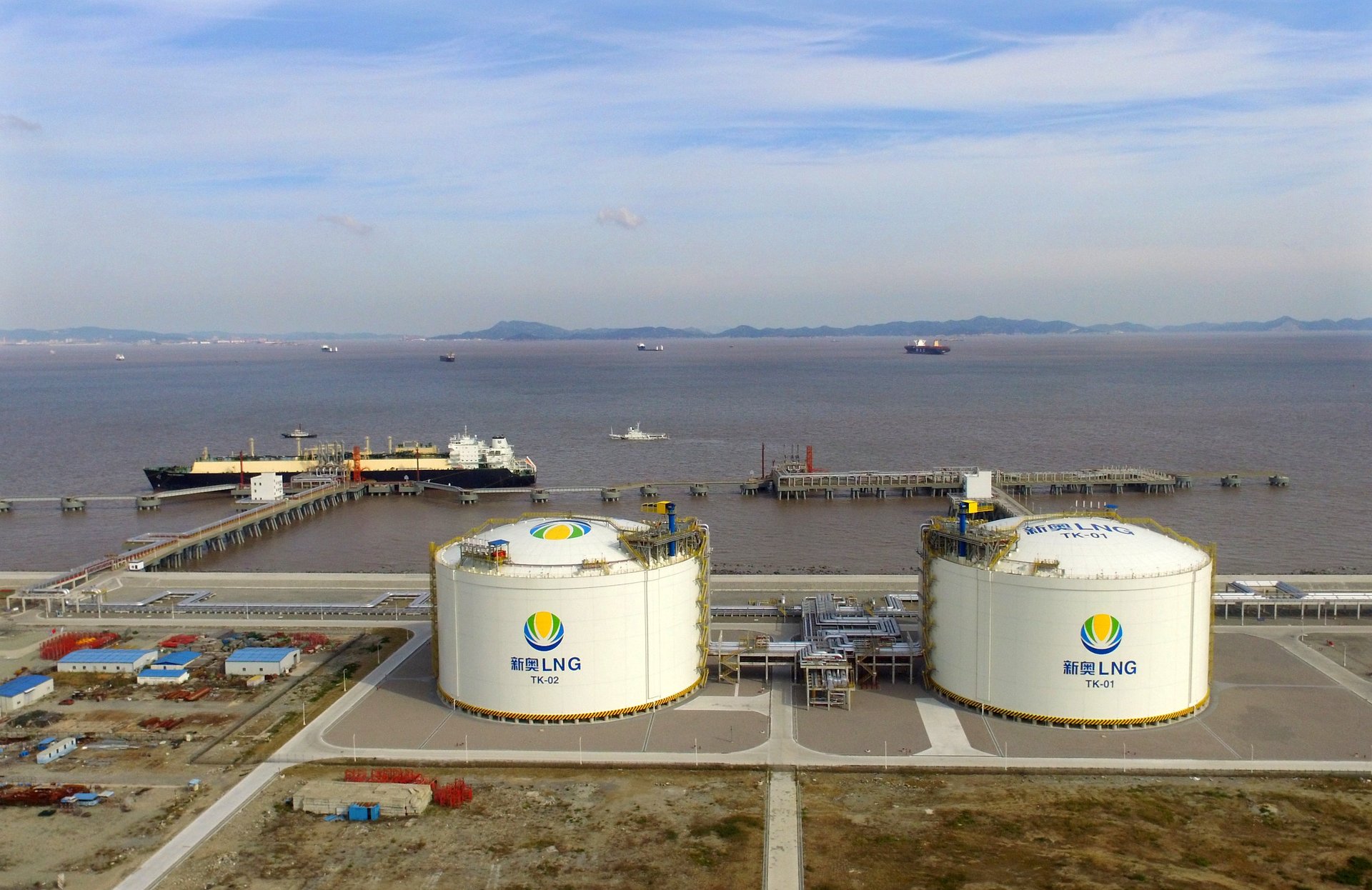Oil and gas exports are complicating the US-China relationship
While the two countries try to disentangle supply chains, their energy interdependence is growing

This week, the Texas-headquartered liquefied natural gas (LNG) producer Cheniere Energy inked a 20-year deal to supply China’s ENN Natural Gas with the chilled fuel.
Suggested Reading
The contract is the latest in a series of long-term LNG purchase agreements that China has signed in recent months. Last week, the China National Petroleum Corporation inked a second major agreement with QatarEnergy for 27 years of LNG supplies. China’s Sinopec similarly signed a 27-year gas deal with the state-owned Qatari energy company last November.
As China seeks to cut emissions and reduce coal use, it’s turning to LNG as a bridge fuel before renewables capacity ramps up sufficiently. Beijing wants to secure reliable LNG supplies to meet domestic demand and insulate itself from the volatility of global spot markets—particularly in light of last year’s massive disruptions caused by Russia’s invasion of Ukraine.
For now, China’s search for LNG import sources means it will rely on a small number of suppliers—namely Australia, Russia, Qatar, and the US, with most of the increase in Chinese LNG imports expected to come from the latter two, according to a new paper on China’s energy security published last week by Michal Meidan of the Oxford Institute for Energy Studies (OIES).
US LNG exports to China surged to record highs in 2021. And while those levels fell last year, that was in part caused by China’s overall slump in LNG imports as the economy slowed under zero-covid lockdowns. Among US lawmakers, even the toughest China hawks want to see greater US LNG exports to the country to support the industry’s domestic growth.
America will be exporting a lot of LNG to China in the years to come. The US accounted for 43% of Chinese LNG sales and purchase agreements signed in 2021 to 2022, according to OIES data.
“Going forward, the USA and China will be increasingly interdependent for oil and gas,” writes Meidan. “While this creates opportunities, it also creates vulnerabilities for both sides: the USA could restrict oil and gas flows to China, thereby impacting the availability and cost of these resources, but that would hurt US commercial interests.”
